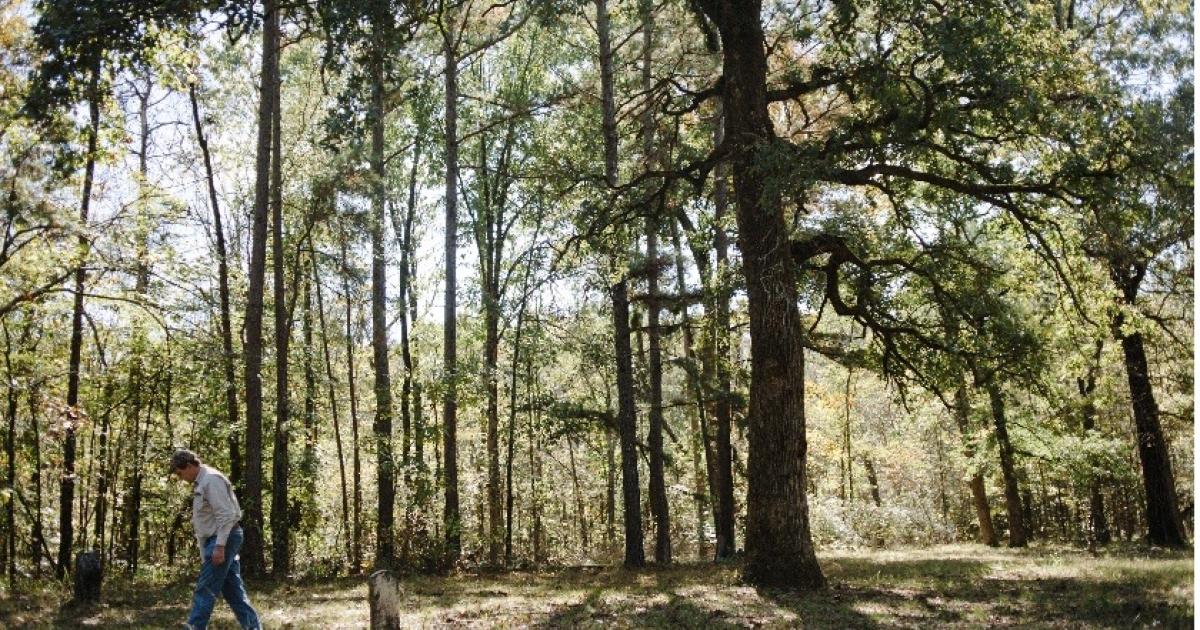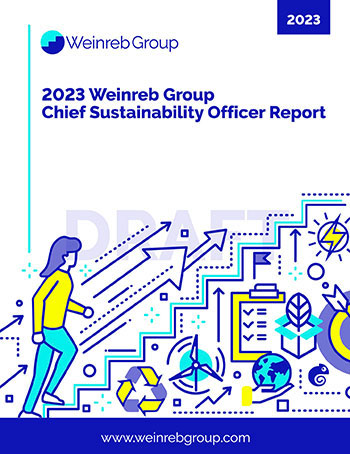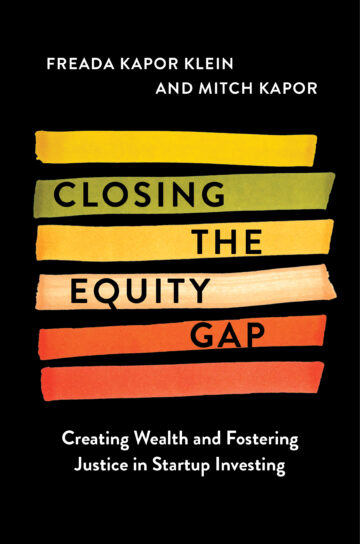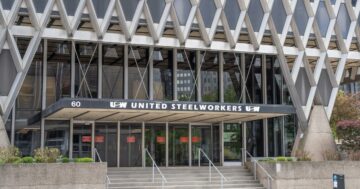
This article is sponsored by P&G.
As recent wildfires have demonstrated, an untouched forest isn’t necessarily a healthier one. In parallel with climate action, responsible forest management is one of the best tools to build resilient forests that will in turn help in the fight against climate change.
There are 3 billion acres of working forests around the world — that is, forests that are managed to supply a steady, renewable supply of wood for thousands of items people use every day. Those that are certified by the Forest Stewardship Council (FSC) ensure that the forest is carefully managed in a way that preserves biological diversity and benefits local communities and workers.
Today, thousands of foresters around the world work to ensure wood is harvested in accordance to FSC’s rigorous environmental and social standards. While there are many best practices when it comes to responsible forest management, people still look to Mother Nature as a guide.
Foresters learning from nature
Foresters often study and mimic natural systems to conserve forests. For a long time, many foresters considered fires to be bad for the forest, but we understand that they can be extremely beneficial. Fires burn away heavy layers of shrubs and small trees allowing sunlight to reach the forest floor. They also break down forest debris that moves nutrients into the soil and they kill invasive species, pests and disease while helping native plants.
However, these benefits are usually only possible with low or moderate intensity fires. Due to the fact that high intensity fires are too hot and unpredictable, they kill off larger established trees, cause excessive nutrient loss and death of organisms in the soils as well as tree roots. This is all while burning larger areas of forest and threatening people.
Foresters can mimic the good impacts of low and moderate natural fires through prescribed fire — fires set in a planned way — and when conditions allow them to be more predictable. Like beneficial natural fires, they result in increased biodiversity due to the grasses, herbs and new shrubs that are able to grow low to the ground and create a greater diversity of habitats. Established trees become stronger and healthier because they are not crowded and competing for nutrients with many other trees. The forests become more fire-resilient overall and less likely to have high intensity fires in the future when there is less debris, shrubs and small trees to feed a fire.
Lightning-caused fires and windstorms also create natural openings in a forest, which encourage new trees to grow and result in patches of different ages throughout a forest. These different aged patches increase the diversity of habitats and support an overall increase in biodiversity. Responsible forestry creates similar benefits by mimicking the size, shape and pattern of these openings during harvests of trees. Also, when planting is necessary, it replenishes what is harvested using a similar mix of native trees.
The role of business
Forests are natural systems and it’s important to view these lands at the ecosystem level because of all the benefits that come from them, from biodiversity and clean water to healthy soils and seed stocks. Managing forests correctly is key to their resilience, as well as the resilience of the wildlife and communities that depend on them.
Businesses that use materials from trees, from companies that make toilet paper such as P&G to building suppliers, have a responsibility to know where their materials originated and to ensure they were responsibly harvested and the forest regenerated.
Here are six ways companies can continually be inspired by nature and do their part to enable thriving working forests with partners such as FSC:
- Partner for greater impact — join a forestry-focused coalition with a commitment to accelerate sustainable practices in the industry. These groups are a great way to connect with like-minded corporations to discuss challenges and drive solutions that benefit all.
- Become an FSC member and be an advocate for stringent standards that prioritize people and nature.
- For those selling fiber-based products, become an FSC-certified company.
- Conduct forest visits to learn about the sustainability practices being implemented by suppliers.
- Meet with suppliers to share best practices on forest regrowth, species conservation and local community projects.
- Hire a forester or other natural resource professional who can ask the right questions to suppliers and partners, and who can elevate corporate commitments.
FSC certification ensures adherence to forestry processes that mimic Mother Nature and other proven techniques. It also delivers greater transparency and continual improvement throughout a company’s supply chain, including increasing the amount of FSC-certified forests. More certified land results in more certified wood-pulp for paper products and packaging, which helps companies to reach their responsible sourcing goals.
For more information on the benefits of certified forest management or becoming FSC certified, visit www.us.fsc.org.
- SEO Powered Content & PR Distribution. Get Amplified Today.
- PlatoData.Network Vertical Generative Ai. Empower Yourself. Access Here.
- PlatoAiStream. Web3 Intelligence. Knowledge Amplified. Access Here.
- PlatoESG. Carbon, CleanTech, Energy, Environment, Solar, Waste Management. Access Here.
- PlatoHealth. Biotech and Clinical Trials Intelligence. Access Here.
- Source: https://www.greenbiz.com/article/protecting-forests-through-better-forest-management
- :is
- :not
- :where
- a
- Able
- About
- accelerate
- accordance
- acres
- Action
- adherence
- advocate
- against
- aged
- Ages
- All
- allow
- Allowing
- also
- amount
- an
- and
- ARE
- areas
- around
- article
- AS
- ask
- At
- away
- Bad
- BE
- because
- become
- becoming
- being
- beneficial
- benefit
- benefits
- BEST
- best practices
- Better
- Billion
- Break
- build
- Building
- burn
- burning
- but
- by
- CAN
- carefully
- Cause
- Certification
- Certified
- chain
- challenges
- change
- clean
- Climate
- climate action
- Climate change
- coalition
- come
- comes
- commitment
- commitments
- Communities
- community
- Companies
- company
- Company’s
- competing
- conditions
- Connect
- CONSERVATION
- considered
- continually
- Corporate
- Corporations
- correctly
- Council
- create
- creates
- crowded
- day
- Death
- delivers
- demonstrated
- depend
- different
- discuss
- Disease
- Diversity
- do
- down
- drive
- due
- during
- ecosystem
- ELEVATE
- enable
- encourage
- ensure
- ensures
- environmental
- established
- Every
- every day
- excessive
- extremely
- fact
- fight
- Fire
- fires
- Floor
- For
- forest
- from
- FSC
- future
- Goals
- good
- great
- greater
- Ground
- Group’s
- Grow
- guide
- Have
- healthier
- healthy
- heavy
- help
- helping
- helps
- High
- HOT
- http
- HTTPS
- Impact
- Impacts
- implemented
- important
- improvement
- in
- Including
- Increase
- increased
- increasing
- industry
- information
- inspired
- into
- invasive
- IT
- items
- join
- jpg
- Key
- Kill
- Know
- Land
- lands
- larger
- layers
- LEARN
- learning
- less
- Level
- like
- like-minded
- likely
- local
- Long
- long time
- Look
- loss
- Low
- make
- managed
- management
- managing
- many
- materials
- member
- mix
- moderate
- more
- mother
- moves
- native
- Natural
- Nature
- necessarily
- necessary
- New
- of
- off
- often
- on
- ONE
- only
- openings
- or
- organisms
- originated
- Other
- overall
- packaging
- Paper
- Parallel
- part
- partners
- Patches
- Pattern
- People
- planned
- Planting
- plants
- plato
- Plato Data Intelligence
- PlatoData
- possible
- practices
- Predictable
- preserves
- Prioritize
- processes
- Products
- professional
- projects
- protecting
- proven
- Questions
- reach
- recent
- Renewable
- resilience
- resilient
- resource
- responsibility
- responsible
- responsibly
- result
- Results
- right
- rigorous
- Role
- roots
- seed
- Selling
- set
- Shape
- Share
- similar
- SIX
- Size
- small
- Social
- soil
- Solutions
- Sourcing
- Sponsored
- standards
- steady
- Stewardship
- Still
- Stocks
- stringent
- stronger
- Study
- such
- sunlight
- suppliers
- supply
- supply chain
- support
- Sustainability
- sustainable
- Systems
- techniques
- that
- The
- The Future
- the world
- their
- Them
- There.
- These
- they
- this
- those
- thousands
- threatening
- thriving
- Through
- throughout
- time
- to
- Toilet
- too
- tools
- Transparency
- tree
- Trees
- TURN
- understand
- unpredictable
- untouched
- us
- use
- using
- usually
- View
- Visit
- Visits
- Water
- Way..
- ways
- we
- WELL
- were
- What
- What is
- when
- which
- while
- WHO
- Wildlife
- will
- with
- wood
- Work
- workers
- working
- world
- zephyrnet








